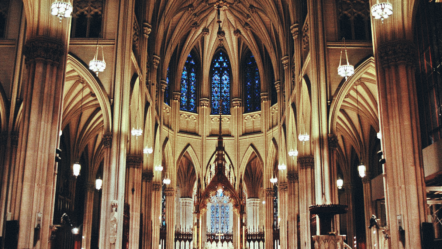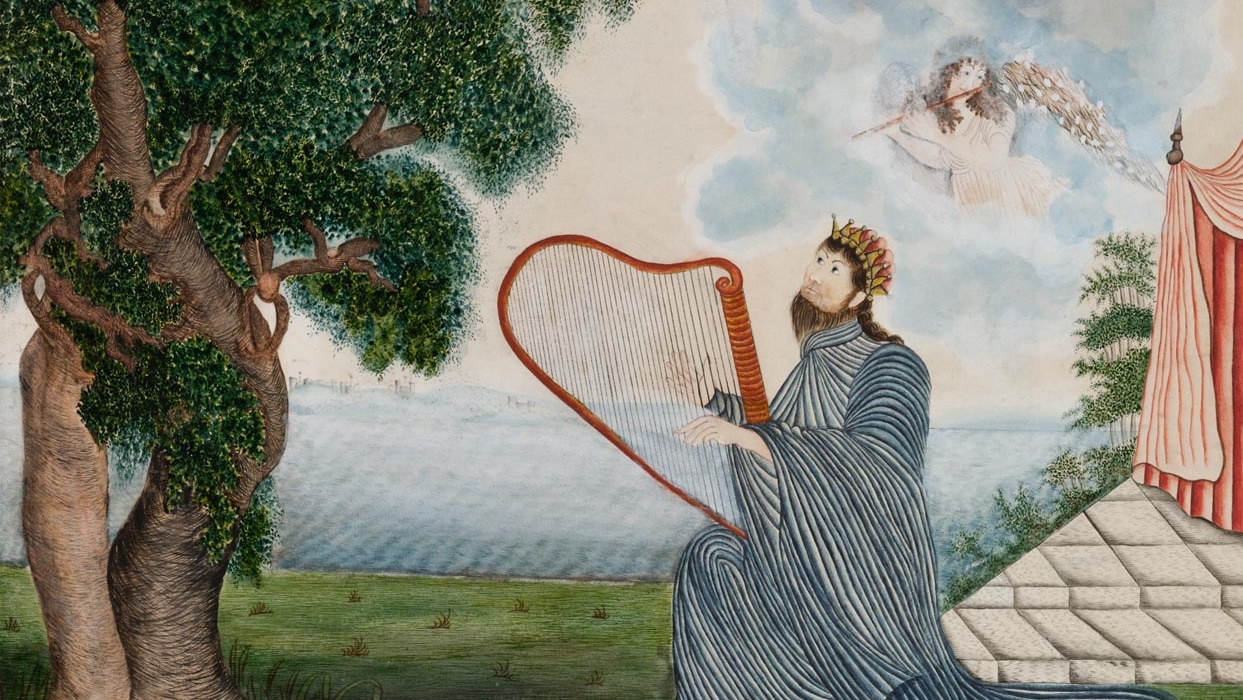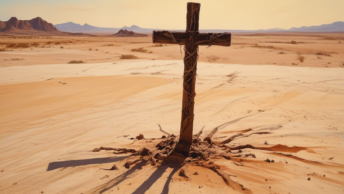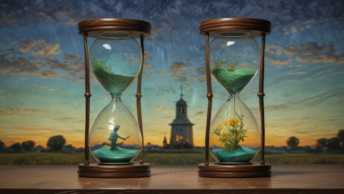Since Lent began, I have been writing about whatever idea popped into my head. The thought of writing something devotional never entered my mind. That was until I started reading some of the other entries on these pages. All beautifully written, their authors have attained a level of Catholic devotional insight, I never thought possible for me. And that is after 80 years of being a baptized Catholic.
Oh, I have studied the Catholic faith incessantly since I was yanked into a classroom by a nun when I was six-years old. I never went to a school that wasn’t based on Catholicism and that includes first grade to my Ph.D. studies. I think the problem arose for the same reason that I recounted in my 2017 essay, The Parish Lector some seven years ago, where Father Jack threatened to punch me in the nose on the steps of the Cathedral at Orvieto, Italy after a Mass. I had just proclaimed the readings and the priest asked me why I was not one in my parish. When I hesitated, he told me what he would do if I said I was not worthy.
I think I never wanted to give the impression that I was holier than thou, or obsessively pious. Not that I think others who write on spirituality or are lectors are phonies, but it is just that I do not feel advanced enough to talk or write about it with any authority. Quite frankly, I have been more intellectually drawn to many ideas of Catholic thought and applications than the devotional side of our Catholic coin.
I feel like a mere amateur when it comes to my experiences with the Holy Spirit. In some ways the Spirit is unheralded and unknown to many of us. That is until just recently when I sense that the Church is trying much harder to explain what the Holy Spirit’s role is and how it relates to our salvational history. In writing some of these essays, I have become more aware of the Spirit’s role in my life.
Quite possibly, the basic fact just may be that I do not have the temperament for frequent meditation, timeless prayer and experiences of new levels of spirituality. I think this is clearly evident when I am writing about personal things, such as a sense of time, order and getting things done.
I have always been in a hurry. As a result, my hubris has been a dedicated sense of carelessness. I am akin to the rabbit in the Disney version of Alice in Wonderland, who is obsessed with time. His constant refrain is I am late, I am late for a very important date. I never liked deadlines because, oddly enough I do not like to be rushed. I am always early for all appointments, tests, Masses, shows and sporting events. When I turn in an assignment, I try to do it early.
St. Louis Cardinal pitching great, the late Bob Gibson often said that he pitched as if I was double-parked. I think I have lived too much of my life in a hurry. It is a hard pattern to stop after so many decades. I am not sure if I am running away from something, toward something or just running, such as Forrest Gump did in his eponymous film. But the bottom line is that I have not left enough time for God to speak to me as much as I need. A lot of this has to do with my formal religious upbringing.
I have belonged to three parishes in my life. Each one has had a different and just maybe an evolutionary effect on my intellectual and spiritual formation. The parish church of my early formative years was Our Lady Queen of Martyrs in Forest Hills, NY. This was the old Church before Vatican II, where I never had a teacher, who was not a habited nun.
Its imitation gothic spires still send my thoughts and feelings skyward, like St. Patrick’s Cathedral in Manhattan. The nuns were very strict with us, with their emphasis on sin, Heaven and Hell. They strongly stressed rules, commandments and good order. I also went to Xavier High School, which was also a military school. Given the Jesuits’ military origins, I think my education there sounds redundant. The Jesuit fathers and our military teachers just re-enforced much of what the nuns had taught us.
So during Lent I gave up things, like candy, TV and so on with the hope of disciplining my physical needs. My best experience at Queen of Martyrs was attending a Good Friday devotion, presented by my favorite priest of all time, Bishop Fulton J. Sheen. What a treat that was.
As an aside every time I have gone back to New York City, I have visited St. Patrick’s Cathedral on Fifth Avenue, the pinnacle of Gothic churches in my opinion. Incidentally, Bishop Sheen had been buried there with other famous Catholic prelates for many years before a regrettable argument between the powers that be, removed his remains to his home town, Peoria, Illinois.
At The Church of the Annunziata in Ladue, Missouri, which was also built in the Gothic style, I spent 48-years attending Masses, Lenten and sacramental functions. During Lent, I tried to do more positive things, including attending regular Holy Hour, where I usually said a rosary and read from one of Bishop Sheen’s books. Most of the people I got to know when we first joined were older, more conservative than I and usually not open to some of the proffered changes advanced by Vatican II, especially the strict limitations on the Latin Mass.
It was during my long tenure at Annunziata, that I had my main crisis of faith, which still lingers inside me today. In my essay, published in 2015, Two Churches, I explained I was caught between the pull of the old Church before Vatican II and the new one since. I liked some things about each Church but disliked other things as well. In a more recent article, An Old-Fashioned Catholic, I revisited that conundrum in light of Pope Francis’ absolute disdain for the old Church.
My third parish has been a much different experience. We joined St Ann’s of LaSalette, run by the LaSalette Order of priests nearly two years ago. (The fact that my three parishes all have a strong relation to Our Lady has not been lost on me.) This parish is in stark contrast to both of my aforenoted parishes, even the ones we attended during vacations, trips and special events.
First of all, it had a more updated look, though not like some of the contemporary horizontal churches I had attended in St. Louis. I have never experienced such warmth from my fellow parishioners. They truly evoke the spirit of the Gospel that says you will know them by how they love each other. At the beginning of Mass they have an introductory moment where one greets the people near them.
After the Mass, the celebrant asks if there were any visitors in the gathering. We had been visitors for four years while we still lived in St. Louis. We just loved getting up and receiving the greetings of virtually everyone in the church. The Sunday after we closed on our home, I could not wait to get up and tell them, that they would not have to do this for us anymore because we were fellow parishioners. Their welcome was deafening.
I think the special spirit that emanates from this parish has to do with the history of Our Lady of LaSalette. To my surprise, of the major apparitions Our Lady has made throughout Catholic history, this one was completely unfamiliar to me. Her apparition in LaSalette was after Gudalupe but before Lourdes and Fatima, yet I had never heard of it.
To dispel my ignorance, I joined a parish discussion group. Our Lady appeared to two young peasant children, Maximin Giraud and Melanie Calvat, at LaSalette-Fallavaux in France, on September 19, 1846. In very dramatic terms, she told the young shepherds that her Son was very unhappy with the people of their town because they were not going to Mass on Sundays and were taking her Son’s name in vain frequently.
Our Lady was having trouble holding Him back from sending them three-years of drought, which she described in detail. In our Church chapel, they have a unique statue of our Lady. While virtually all statues of the Virgin Mary, including some of Our Lady of LaSalette, have her standing, this one has Mary sitting down on a rock or a mound of earth. She is holding her head in her tear-stained hands, praying for the people of their town. The statue is gripping and open to many applications.
I made the comment during our discussion that when compared to the sins of the faithful today, missing Mass and using Jesus’ name in vain, now seem almost commonplace in our parish congregations. The discussion leader pointed out that these sins, while mild in comparison to many other sins, were like entry level offenses that gave rise to far more deadly behaviors.
Most importantly for me was that this parish has a special devotion to the worship of the Eucharist. Most hours the Chapel has from 2-10 people praying. I do not have a special time but have made sporadic visits. Before Lent, the Parish gave one copy of religious writer, Matthew Kelly’s, short book, Beautiful Eucharist, published in 2023. I have been using it for my meditations this Lent. Kelly wrote the introductory and closing chapters.
All the other shorts essays were written by relatively well-known Catholic writers, including a contribution from Bishop Sheen, who had such a special devotion to the Holy Hour that he had a chapel in his room and spent one hour daily with the Blessed Sacrament for virtually all of his priesthood. The chapter that really caught my attention was written by Boston College Philosophy Professor, Peter Kreeft. He called it What I Learned from a Muslim about the Eucharist. But this is a subject for next time.








